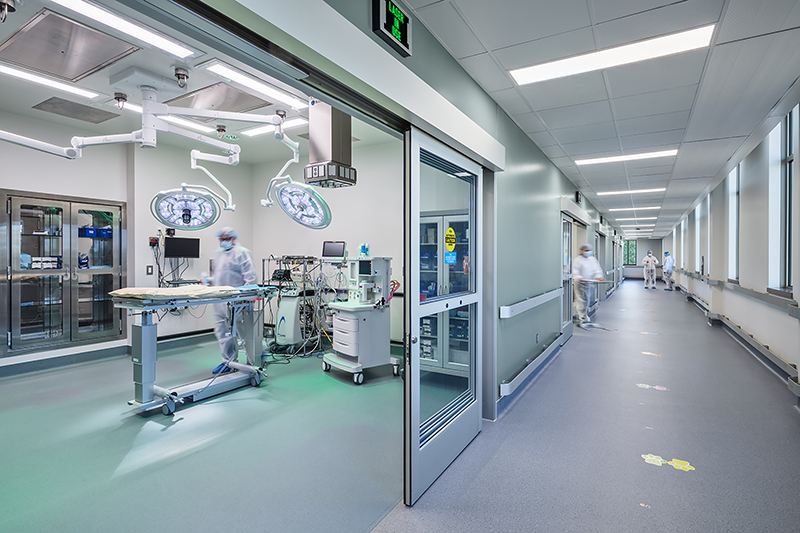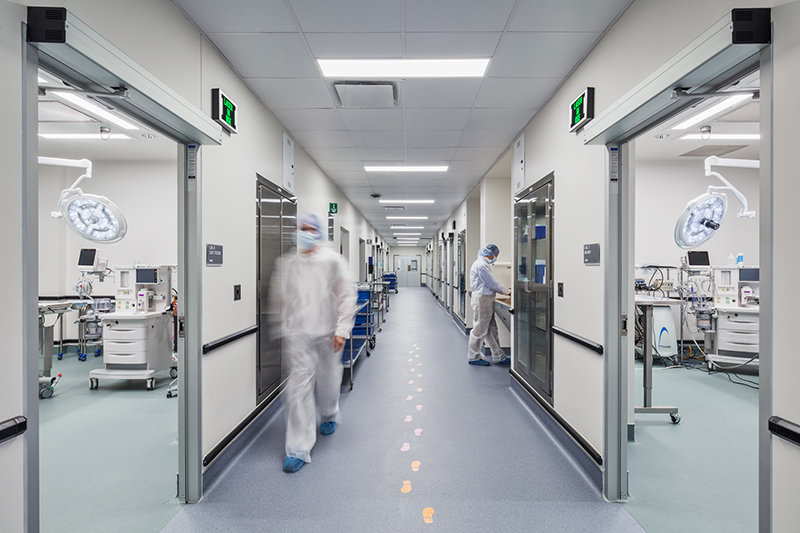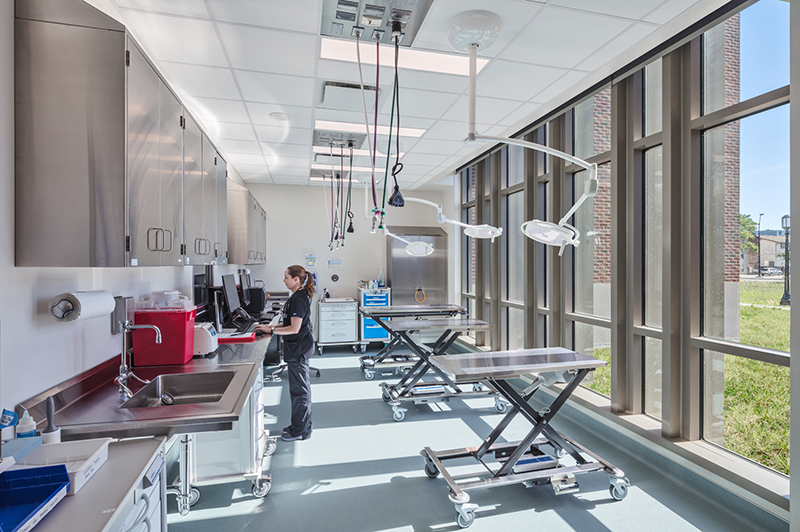- Tour Home
- >
- Small Animal Hospital
- >
- Surgery Suites

Surgery Suites
The Surgery Complex has 11 operating rooms, with three for orthopedic surgery, three for soft tissue surgery, two for neurosurgery, and one each for ophthalmic surgery, interventional urology, and general surgery. Orthopedic surgeries are procedures such as the correction of broken bones, cranial cruciate ligament ruptures, and total hip replacements. Neurosurgery procedures include repair of back/spine injuries and brain surgery. Soft tissue surgeries include procedures such as spays/ovariectomies, castrations, abdominal and thoracic surgeries, and tumor removal surgeries. Ophthalmic surgeries include procedures to remove cataracts, repair corneal ulcerations, and other eye surgeries. Interventional urology receives referrals from across the country. Several of the surgery suites are equipped with green light, which enables surgeons to see while scoping, because the green light does not to interfere with image visualization.
For every surgical procedure, there is a dedicated surgical team present that includes a faculty veterinarian, anesthesia personnel, veterinary interns and residents, veterinary nurses, and both veterinary medical and veterinary nursing students. After surgery, patients are transported to the ICU or appropriate ward for recovery and post-surgical care.
The small animal surgery complex has separate treatment rooms for orthopedic and soft tissue procedures, and a day holding area for patients. There are also separate student rounds rooms.





